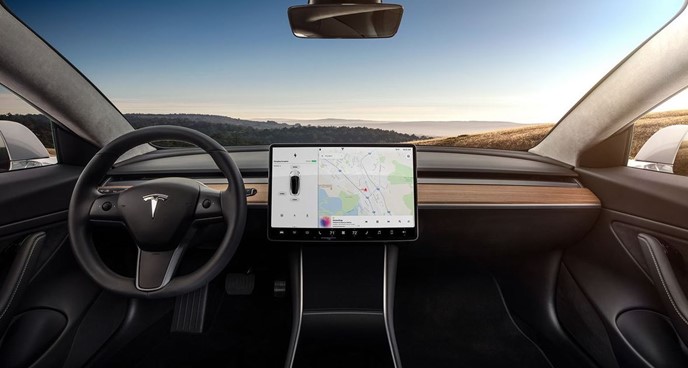Self-driving vehicles – once a dream of the future is now a reality with the potential for a positive environmental impact. While fully autonomous cars are not perfect or legal in most places, the technology is already a part of some vehicles. Many internal combustion car manufacturers are already adding advanced self-drive features. These include automatic braking, lane departure correction, and collision avoidance.
Meanwhile, one electric car company is going all-in on self-driving. As a leader in electric car innovation, all new Tesla vehicles come standard with all the hardware needed for self-drive. This means owners will eventually be able to take short and long-distance trips with no action required by the person in the driver’s seat. Tesla owners currently have the choice as to whether or not to purchase the option of enabling the features. There are also limitations built-in to the software to allow Tesla to perfect the systems and for laws to change to legalize more self-drive features.
These autonomous features have the potential to increase the safety of automobile travel significantly. The onboard camera, sensors, and computers can “see” exponentially better than humans and react even faster. However, they also offer a significant environmental impact. Electric cars already offer significantly reduced emissions. However, until we find a completely clean source of electricity production, it is vital to make electric vehicles as efficient as possible. And that is where self-drive comes in.
Why Self-Drive Electric Vehicles Are More Efficient
Several factors make self-drive electric vehicles more efficient. First of all, autonomous systems drive more efficiently. Human drivers waste a lot of energy with inefficient driving habits such as heavy braking and rapid acceleration. Onboard computer systems can calculate the most efficient way to drive without increasing travel time.
Self-drive also helps improve traffic flow and reduce congestion. Traffic congestion is one of the leading causes of increased emissions and reduced energy efficiency. The braking and acceleration of stop and go traffic is not only frustrating for drivers, but it also wastes energy. Self-drive, combined with data on road and traffic conditions and eventually communications with other vehicles, means less congestion and less wasted energy.
Fewer Cars, Less Energy
Self-drive electric vehicles save energy in other ways, including reducing the number of cars on the road. Consider the impact on the environment of building vehicles that sit still for the clear majority of their lifespan. Many families, due to jobs and activities spread out around town, have two or three cars.
With self-drive, one car can drop one family member off at work, take the kids to school, return home to run someone to an appointment, and park itself until it is needed again. Car sharing becomes an even more significant possibility when the car can automatically take care of being where it is needed.
We all have a responsibility to help care for the environment. Sometimes, technology can help. Forward-thinking electric vehicles with self-drive can help us reduce our impact on the environment while making travel safer, more comfortable, and more convenient.







